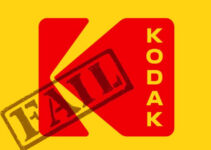General Motors is an automobile manufacturing American multinational company. The automotive brand was on the verge of bankruptcy back in 2009; cultural and leadership change and nationalization saved the company from bankruptcy and put it back to profitability. Today, we’ll discuss the General Motors change management case study; historical background, challenges, and driving forces towards change; leadership, and cultural changing steps in transforming the company.
Historical Background of General Motors
- 1908 – William C. Durant founded the automobile company
- 1916 – Reincorporation of GM and it became a public company
- 1921 – GM engineer discovered leaded gasoline as an antiknock agent
- 1937 – GM invented the carbon steel hardening test of Jominy end-quench
- 1962 – Launched first turbocharged car
- 1972 – Developed 1st rear wheel anti-lock brake system
- 1985 – GM removed the cylindrical technology due to poor durability
- 1990 – Introduced first electric vehicle and the company stopped its production later in 2002
- 2009 – Received a bailout of 17.4 billion USD from the US government due to bankruptcy
- 2024 – GM became the top revenue-generating automotive company
Challenges & Driving Forces for Change To GM
Let’s discuss the main challenges and driving forces that were pushing the company towards bankruptcy in the General Motors change management case study;
Automotive Industry Competition
The global automotive industry has become highly competitive over the years. General Motors was gradually losing its market share and profitability to Asian automobile companies like Honda and Toyota. Their market presence and growth led the company to decrease its dominance in the international market.
GM Internal Problems
General Motors has been facing various internal problems and issues; some of which are as follows;
- Biggest workers and employees strike for 50 days in 1988; it means the complete shutdown of manufacturing units for two months
- Toyota was paying 44 USD an hour wages; GM was paying 74 USD an hour wages
- High pricing strategy and repetitive car designs with no uniqueness
- Not developing fuel-efficient SUVs
- Failed to implement the new technology
- Poor leadership
All these internal factors would weaken the company’s market position and lead the automobile brand to bankruptcy.
Economic Crisis of 2008
The economic recession of 2008 and the crisis in the automotive industry led General Motors toward bankruptcy. Higher unemployment and unstable fuel prices made people cut down their spending and owning the automobile became unaffordable to them.
The U.S. government intervened, injected 50 billion USD to save the company; went through a massive restructuring from top to bottom; dismissed many employees, and shut off factories and brands.
Cultural and Leadership Change in Transforming General Motors
Some of the main leadership and cultural changing steps in transforming the automobile brand General Motors change management case study are as follows;
Leadership Change
General Motors suffered heavy losses during the leadership of CEO Rick Wagoner from 2000 to 2009. He made various wrong decisions like choosing electric vehicles over hybrid vehicles. However, the BBC’s report highlighted the fact that he had lacked the judgment; and didn’t take the difficult decision of rebuilding the company.
When the US government nationalized the company General Motors by controlling 80%; President Barack Obama forced Rick Wagoner to resign from the CEO position. He brought Edward Whitecare; Dan Ankerson replaced him later. They both had a charismatic leadership personality and launched transformational changes.
Transformational Changes & Darin Decision
The leadership of Edward Whitecare and Dan Ankerson launched a series of transformational steps in General Motors to change the direction of the company. Some of them are as follows;
- Setting new goals and objectives for growth and success
- Implementing cost reduction strategies
- Structural reorganization
- Reducing the number of employees from 228000 to 101000
- Limiting the bureaucratic and administrative involvement in the factory operations
- Decreasing the wages of employees
Liquidation of Auto Brands
General Motors took another daring decision of selling some of the auto brands and models that weren’t profitable. They are like Pontiac, Saturn, Saab, and Hummer. The company shifted its focus to the bread-winning brands that had successfully won the trust and confidence of customers. In order to improve the customer satisfaction level, they invested a significant amount of resources in technology.
Employee Resistance
Massive changes like bankruptcy, leadership change, high responsibilities, cut wages, and other transformational steps brought fear and uncertainty among employees. Whitecare sent an email to all the employees letting them know the smart companies adapt the required and needed changes.
One email wasn’t enough. The company employed multiple channels, engaged with employees, empowering them, giving them the reason for change, and giving them sufficient time and resources to adopt the changes.
Agreement with Union
The employees union also resisted the changes. General Motors and the union had come to an agreement after a series of arguments and heated discussions. The top of the discussion was health services, pension of employees, cutting the wages of employees, and limiting the other social privileges of employees and workers.
Conclusion: General Motors Change Management Case Study |Cultural and Leadership Transformation of General Motors
After an in-depth study of the General Motors change management case study; we have realized that General Motors is the world’s leading automobile brand. If you are learning about the leadership and cultural change of General Motors; then you should keep in mind the abovementioned elements, driving forces for changes, and historical background.
Ahsan is an accomplished researcher and has a deep insight in worldly life affairs. He goes Live 3 days a week on various social media platforms. Other than research writing, he’s a very interesting person.


